Chrysanthemums are the last colors of summer in the fascinating autumn garden, the brightness of which can be compared unless with autumn astrams. Their bitter aroma, resembling a wormwood, which flies with autumn wind, reminds of the imminent approximation of cold weather. Revive the garden and extend the good summer mood you can board Korean chrysanthemums. They are hybrids of garden chrysanthemums, are easily grown, and every year their varieties increase.
Chrysanthemum Korean, description
Chrysanthemum Korean (S. Koreanum) is a small-bedroom hybrid, which in the people called "Dubki" for the similarity of the structure of leaves with oak. This shrub chrysanthemum growing up to 125 cm high depending on the varietal characteristics. It is inherent in multiple inflorescences of both simple and terry species, the diameter of which ranges from 2 to 9 cm. This chrysanthemum is unpretentious in leaving, perfectly multiplies, it is easily carred in fertile soil and lives there for 3-4 years. The flowering of this "Autumn Beauty" falls on the Equator of September and pleases the eye before the arrival of frosts.
Depending on the varietal characteristics of Chrysanthemum Korean divided into certain types:
- Under the flowering period, the Rannetic and Late Blowing.
- In height of the bush - low-, medium and tall.
- According to the degree of resistance to frosts - winter-hardy and thermal-loving.
- By diameter of inflorescences - large and small-beds.
Low grands rarely exceed 30 cm in height. They are used to decorate borders or disembarking in vases for landscaping the veranda, arbors.
Speed \u200b\u200bspecies reach 55 cm. They are successfully used to supplement landscape design or grown for cutting and creating flower compositions.
Tall hybrids grow up to 120 cm and are extremely rare. They allow a solid root system and have thick stems, thick foliage and large inflorescences.
Despite the fact that all Korean chrysanthemums bloom in the fall, they are conventionally divided into early, which bloom at the end of August, and the late - their flowering period starts after the arrival of cold weather, that is, in September-October. The use of both varieties of chrysanthemum provides flowering in the garden from August to the end of November. And some species can save their buds to the first snow.
Not all chrysanthemum Korean winter-hardy. Middle and high growth plants calmly carry even harsh frosts under compliance with the preparation for wintering. The low-spirited varieties do not have a solid root system, and can freeze if the air temperature drops below -10⁰. Therefore, it is preferable to dig and transplant to the vases.
The big variety of chrysanthemum is due to the versatility of inflorescences. There are large buds (7-10 cm in diameter), and smaller. Buds are terry, whose petals are placed in several rows. There are also semi-grade and ordinary inflorescences. Chrysanthemums of the pomponic form, who have a solid circle of petals, looks particularly colorfully.
Particular chrysanthemums occupy a special place in horticulture. They are low growth, outwardly resemble a ball, covered by many small buds of all kinds of color. Their variety is so great that they are most commonly used to decorate parks alleys, gardens, alpine slides. They are suitable for home cultivation. They grow great in pots on the balcony or veranda and long bloom even after the onset of cold weather.
Chrysanthemum Korean, varieties
All varieties differ among themselves with a color palette, a height of a bush, size and structure of inflorescences. Most of the varieties are frost-resistant and withstand temperatures up to -7⁰, so successfully grown everywhere.
The varietal variety of Korean chrysanthemums is constantly increasing, so it is difficult to keep track of new hybrids, but the following varieties remain among the flower flowers:
- "Balysh-Kibalchish" - low-spirited border shrubs. The foliage forms a bulk bush (up to 60 cm in diameter) with simple scarlet infloresions, less often a purple shade.
- "Apple color" - the average chrysanthemums with large terry white-colored bootons with a bare-catching alcohol. The variety has large stable stems, so suitable for cutting and forming bouquets.
- Korean White - Chrysanthemums with a low winter hardiness. A distinctive feature of this variety - large white flowers with cream tump.
- "Amber" - a variety of a brightly fiery tint. The variety quickly increases the root system and easily multiplies. These are average shrubs up to 50 cm height.
- Lelia is low bushes with raspberry inflores. Bright medium diameter buds perfectly decorate the autumn garden with their flowering until mid-November.
- "Sunny" is a tall grade growing up to 80 cm. The scenery terry, large, have a bright yellow color without other shades. The variety is easily multiplied and tolerates winter.
For landing Korean chrysanthemum, you can buy certain varieties or a ready mix of different seeds, to create rainbow multicolored carpets from chrysanthemums.
There are many options to choose from, but the gardeners are more likely to prefer this mixtures:
- Chrysanthemum Korean "Galaxy Stars" - low bushes with motley terry inflorescences. The grade is resistant to frozen, actively blooms until the end of October, sometimes capturing the first days of November. Suitable for planting in open ground or street vases. Great in the cut.
- Chrysanthemum Korean "Velvet Autumn" - a Late Cutting Shrub, who quickly acquires roasting processes. Gusto flowers with terry flowers of large size until the last days of autumn. It is often used in landscape design in tandem with coniferous shrubs. Chrysanthemum is resistant to frozen, and long retain freshness after cutting.
- Chrysanthemum "Korean mixture" - a reprehension bushes with inflorescences of various shades and types of buds: from small and simple to large and terry. Designed for growing in the garden, greenhouses and in pots. Long stand in a cut.
Korean chrysanthemum, landing and reproduction
Dubs are related to light-affilical colors, so choosing a suitable place to land, it is better to pay attention to the most sunny section without open drafts and water stagnation.
Selection of a place for Korean Chrysanthemum
To plant this flower in a darkened place will be a big mistake - the stalks will stretch, the foliage is powdered, the color of the inflorescence will become dim, and the blossom duration will be significantly reduced. Also demanding chrysanthemum and soil. It must be moderately wet so that the plant does not fail or rot. But at the same time, the plant does not like dry, hard ground, so regular watering is needed. If you do not provide the desired amount of moisture stalky chrysanthemums, and the flowers will become small.
The soil for Korean chrysanthemums requires neutral. Too sour substrate does not give the plant to grow and actively produce buds. In addition, the soil must be nutritious. A mixture of conifers, overwhelmed manure and peat.
Rules landing Korean Chrysanthemum
Seedling landing is carried out in the spring, when return freezes are already behind, in the period from the end of May until mid-June. It is possible to land and fall, but no later than 2-3 weeks before the first frosts.
Optimal weather conditions for landing Korean chrysanthemums - Faint or rainy day. Chrysanthemum is well accepted and grows on fertile, moisture and air-permeable soil. If the soil is heavy, you can easily achieve a loose structure using sand.
Planting seedlings is better in the trenches, and not individual wells. You need to dug a depth of 30 cm deep, to pour plenty of water, then lay a bowl of drainage, and after it is a mixture of soil and biohumus (1: 1/2). Further, the root system is placed in the trench, we can paint it and put it with soil. At the same time, it is necessary to maintain a distance between the bushes at 45-60 cm, depending on the varietal features of chrysanthemums. If tall chrysanthemums are planted, supports are additionally installed.
Immediately after the landing, it is necessary to make a sepure - cut off the growth point of a young seedling. For a stronger and rapid rooting, you can pour the entire trench with a solution of Kornin in a ratio of 1 g of powder per 1 liter of water. After that, you need to provide a suitable microclimate for the formation of the root system. To do this, it is necessary to cover the seedlings by Loutrasil or any other underfloor material. Shelter is removed after the first signs of growth.
Korean chrysanthemums are recommended to transplant every 4-5 years. This prevents the appearance of small unsightly colors.
Shining Korean Chrysanthemum
The most affordable and easy way to reproduce chrysanthemums is shywell. A reproduction is carried out in the same period as the planting of seedlings, that is, in spring with a stable air temperature of 22-25⁰s.
With the help of a sharp knife, a cut of a cutter with a royal escape of the plant (the side sprout is not suitable) at a distance of a few mm above the kidney with a leaflet. The resulting cutlets is immersed in any growth stimulator and the slice is stuck in the prepared container with a nutrient substrate and a sand ball (2-3 cm), at an angle of 30-40⁰. The cutlets should be in the sand, not plunging into the ground. After that, the cutting containers are placed on a sunny window sill, the soil regularly moistened and the temperature is maintained at the level of 15-18⁰. After 14-20 days, the cuttings allow the roots and can be replaced.
Growing Korean Chrysanthemums from Seeds
Of course, to multiply chrysanthemums with cuttings or the division of the royalties is very simple. But the grown flower of seeds is not easy, the painstaking work of the gardener, but also the subject of his pride.
Seeds of Korean chrysanthemums
Korean perennials are amenable to a seed breeding method. Seed seeds in a closed ground in February. To get healthy sprouts, you need to buy chrysanthemums Korean perennial with a high percentage of germination, as well as how to prepare the soil. Purun land, sand and humus (2: 1: 1) takes. The mixed mixture is poured with a disinfecting agent.
Drainage, for example, a stone, crushed brick are stacked on the bottom of the containers. Then the soil is laid on top of the drainage, and seeds are sown to a depth of 3-5 mm. Next, the soil moisturizing is carried out, and the container is covered with polyethylene material. Suitable temperature for germination of seed 25⁰s.
Seedling Korean chrysanthemum
After the first sprouts appear, the shelter from the containers is removed. Primary care is carried out: sufficient watering and picking into separate pots (after the advent of the second sheet). You should also hold two shootings of shoots: the first time after the dive, and the second - after transshipment in a large pot.
At this stage, the sprouts of chrysanthemum begun to teach out the street conditions. To do this, they regularly endure the street, gradually increasing their duration of stay in the air.
Saplings of Korean Chrysanthemum
Saplings after dive are kept at 16-17 ° C, watered as the substrate dry out and twice a month feed the complex fertilizers. After 1.5-2 months, the seedlings reach 20 cm in height.
The landing of seedlings is carried out when there is no risk of frosts. Saplings are planted into the prepared rich and loose soil. Wells are made, the bottom is poured ½-1 tbsp. l. Mineral fertilizers and landing seedlings. Then you should pour the soil. In the first days after landing, seedlings should be pronounced.
Chrysanthemum Korean, Growing and Care
Different varieties of chrysanthemums require a similar care, since they need equal conditions of growth. The only thing to pay attention to is unstable to the cold of Korean chrysanthemums. They often freeze, so need additional shelter.
After a successful rooting of seedlings, you need to take care regularly. When the eighth sheet, the tops and side shoots of seedlings are pinching to enhance the branchiness of the stems. This contributes to the formation of a lush bush. In large-flowered varieties, side shoots are completely removed.
Watering chrysanthemum should be abundant and regular. It is better to use the rain or eliminated water with the addition of 2-3 drops of ammonia. During watering, water should be pouring only on rhizome, avoiding contact with foliage.
If the piece of chrysanthemum is not closed, you need to often loose soil and remove sprouted weeds.
Putting fertilizers is held a month before flowering, at the end of August. For this, any phosphoric fertilizers are suitable.
Chrysanthemum Perennial Korean, Diseases and Pest
Chrysanthemums are subject to some diseases. This happens if the soil is overly wet and insufficiently loose, and whole weeds were formed around the bushes.
Among the frequently found diseases of Korean chrysanthemums can be allocated:
- Gray rot - Dark spots on the leaves, which over time are covered with a gray shuttleties.
- Puffy dew - white raid, striking all parts of chrysanthemum.
- Rust - the above-ground part of the plant is affected by brown spots, the leaves are yellow and dropped, the stalks are depleted, the growth of the plant stops.
As treatment with fungi, copper-based preparations are used, for example, copper combustion, burglar liquid, colloidal sulfur.
Often Chrysanthemum amazed by viruses:
- Dwarfs - underdevelopment of stems and early flowering is not for the season.
- Mosaic - crawled color on the leaves.
- Aspermia is a change in the color of leaves and deformation of inflorescences.
These diseases are not amenable to treatment, therefore the irradiation and destruction of plants are carried out.
Nematodes can damage the leaves of chrysanthemums. The marble of leaves, which gradually darken and fall out on their presence. It is quite difficult to deal with these pests, so prevention is needed using formalin and phosphamide.
To affect chrysanthemums can not. She settles in buds and foliage. She sucks juice from the plant, which leads to an elimination of its overhead part. Eliminate this problem can be spraying by accomplish.
Chrysanthemum Korean - Care after flowering
Before the arrival of cold weather, the stalks are cut in a height of 12-15 cm above the ground, then they are plunged and mulched with a dry foliage ball with a thickness of at least 40 cm. In regions with strong frosts, chrysanthemums are additionally covered with a sweetheart.
Nemero-resistant varieties are digging with an earthen room and transplanted into the boxes. They winter in cool rooms at a temperature of 3-6⁰s and air humidity 80%.
As you can see, landing and care of Korean chrysanthemums is a simple and exciting occupation. Strict observance of the rules of agrotechnology will give excellent results to each gardener.

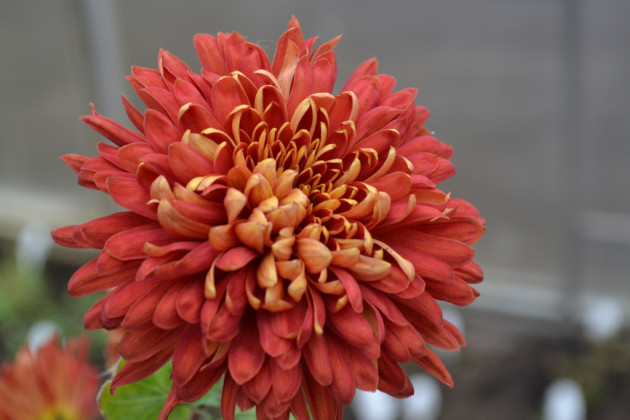

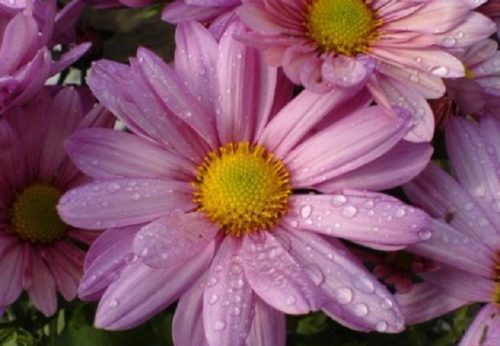
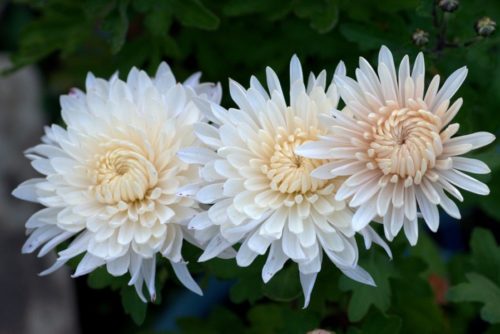

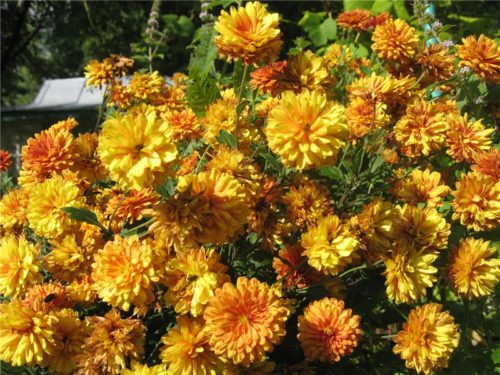
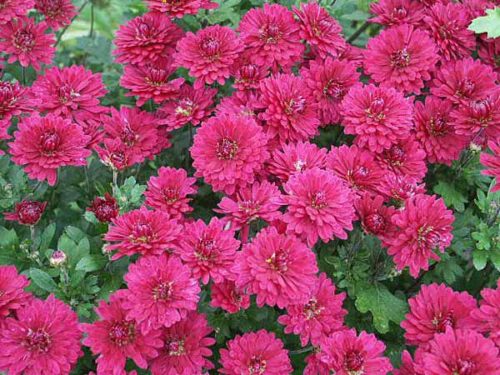
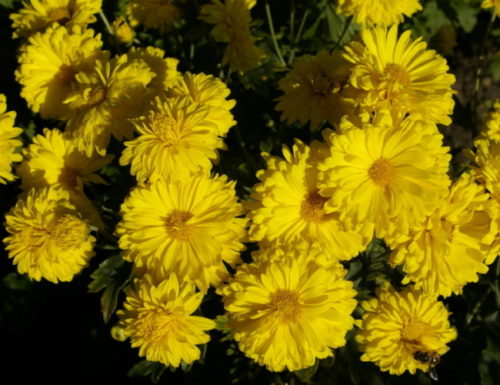
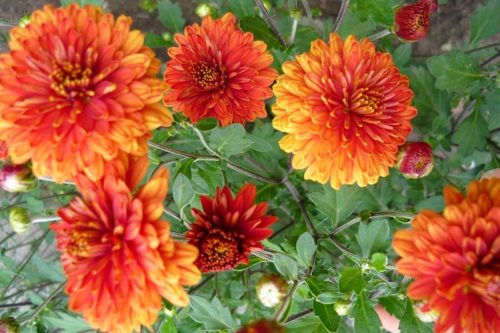
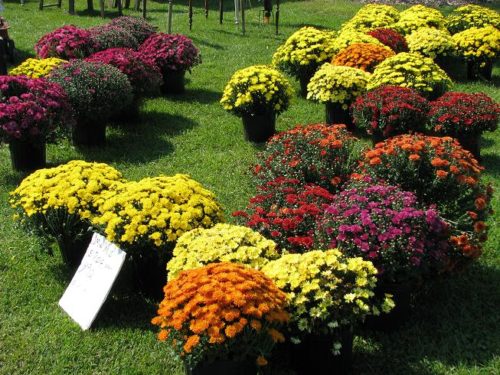
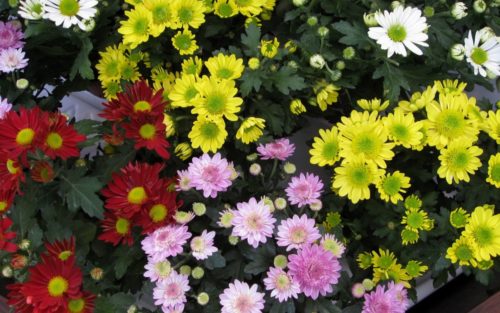
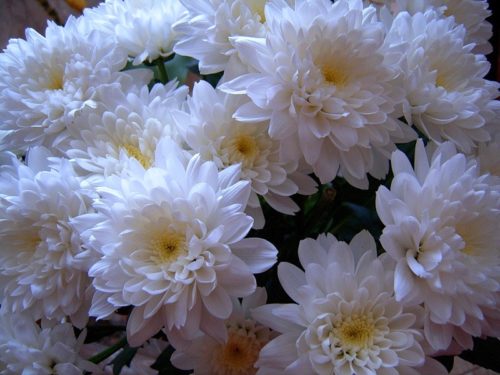
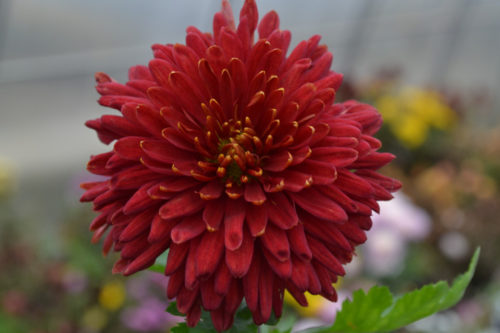
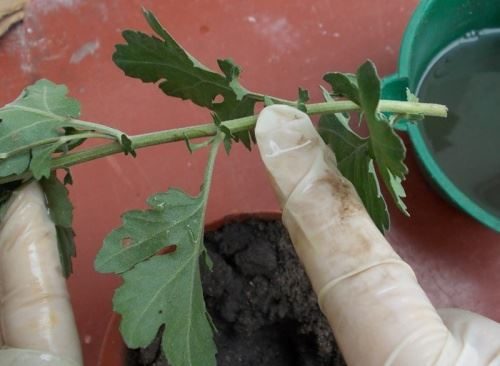
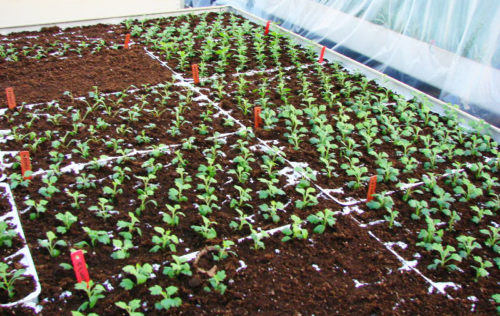
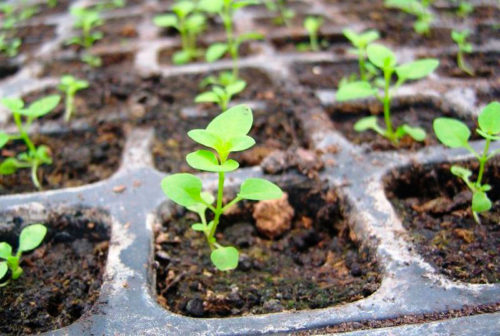
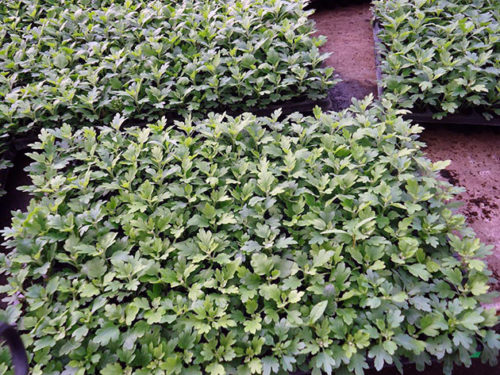
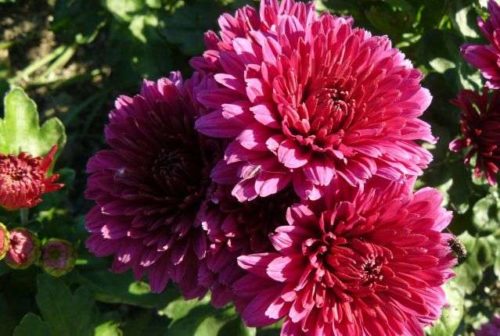
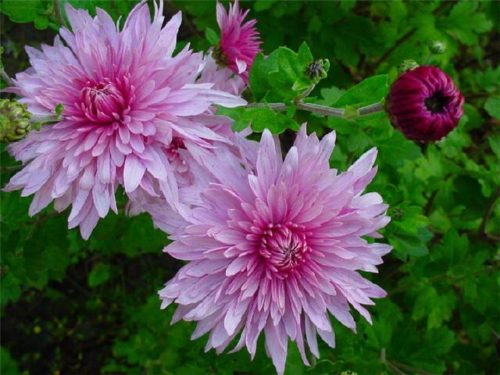
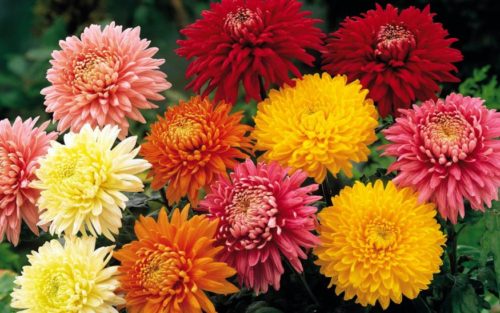

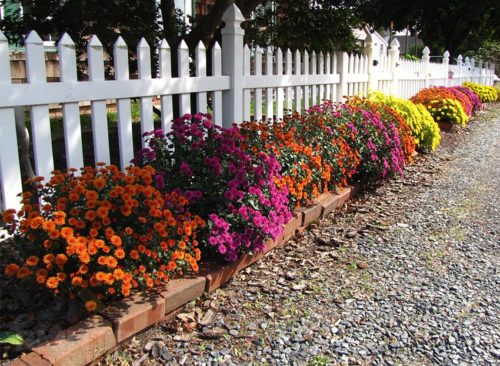
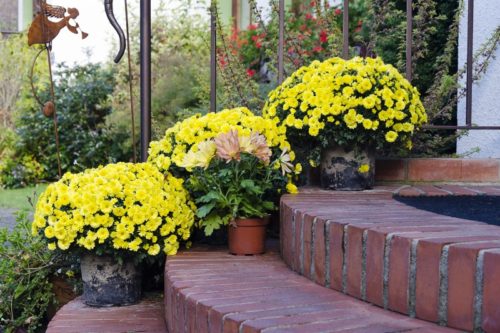
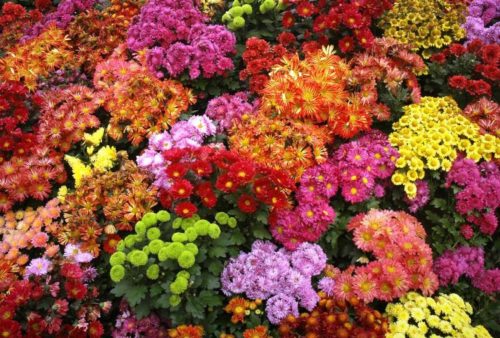
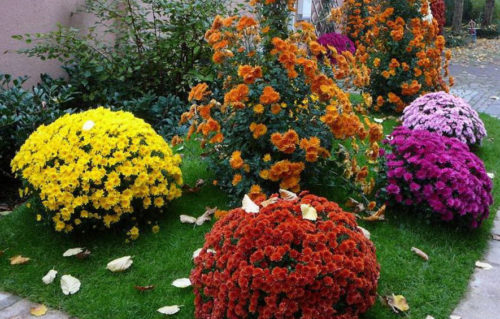
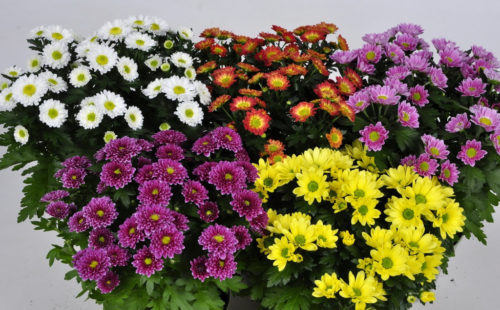
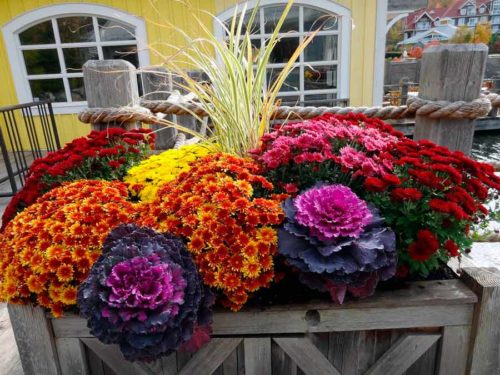
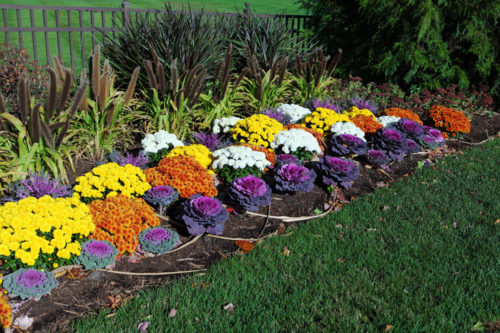












 Start a discussion ...
Start a discussion ...